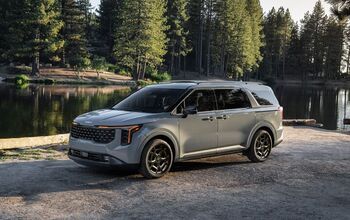Insurance Woes
The minimum amount of liability coverage you must maintain varies from state to state. But, beware since each state sets its own “legal” minimums that may or may not provide you with enough coverage. Beyond these legal minimums, any additional coverage is purchased at the buyers discretion. The key here is to find a balance betwixt adequate coverage and overpaying for insurance in order to have peace of mind for you and your family.
There are several different types of insurance coverage you’ll come across while shopping the rates. Bodily injury and property damage coverage are the most common since they’re mandatory in most states. Many insurers also offer additional coverage with various levels of financial protection. We’ll get to those in a minute, but there are a few things you should know first.
General guidelines published by Consumer Reports suggest a minimum of $100,000 per person for adequate bodily injury liability and $300,000 per accident, plus $100,000 for property damage liability. Your insurer would pay these amounts to someone you’ve been involved in an accident with. Bodily Injury Liability is required in most states and compensates the driver and passengers of another vehicle you’ve been in an accident with. Passengers in your vehicle are also covered. Protecting your assets from lawsuits is the key point behind this coverage. You could get sued even if the accident is not your fault.
This type of coverage is sold incrementally and designates both how much coverage per person you have in an accident, with an additional limit per accident. If you were to purchase $100,000/$300,000 of bodily injury coverage, for instance, then each person injured in an accident where you are at fault could be compensated $100,000, but only up to $300,000 per accident.
How much coverage you need is relative to the assets you have to protect. Consider this: If you make $25,000 a year and rent an apartment, $50,000/$100,000 should be sufficient. However, if you make over $60,000, own a condo worth $150,000 and have another $25,000 in personal investments, then $100,000/$300,000 of coverage is more what you’re looking for.
Your bodily injury liability premium depends on several variables from age and marital status to your credit and driving record. Where you live also has a big impact on your rate. For example, the New York State Department of Insurance says that, a 35-year-old married male living in rural Cortland County to increase his coverage to $100,000/$300,000 from $25,000/$50,000 would pay $86 more per year on average. In the Big Apple, this same man would have to pay an additional $240 per year because the frequency of accidents and bodily injury is markedly higher.
If you have substantial assets, get $300,000 in bodily injury on your automobile policy, and $300,000 on the liability portion of your homeowners policy. Then spend another $150 to $300 for a $1-million umbrella policy to cover yourself against all kinds of liability claims. If you still want more coverage, for an additional million, the cost is negligible. The Insurance Information Institute says it’s typically $75 to increase your coverage to $2 million and then $50 for each additional million in coverage.
Property Damage Liability pays for repairing and replacing someone else’s vehicle and/or property in the event of an accident. State minimums can be as low as $5,000 coverage, but that’s hardly enough to even begin repairing a new Cadillac or Mercedes-Benz, for example. A better strategy would be to have $50,000 of coverage on each vehicle you own. Your safest bet, however, would be to have at least $100,000 in total property damage liability coverage.
Most automobile insurance policies can have more specific protections added to them. Additional costs will apply. Many motorists opt for Comprehensive and Collision coverage because it conveniently pays out when your vehicle is damaged or lost due things like vandalism, natural disasters and theft. On the other hand, collision pays to fully repair or replace your vehicle after an accident. Deductibles for either coverage range from $250 to $1,000 per claim and policyholders usually pick their own. It’s best idea to go with the highest deductible you can afford. It will reduce the premium for this type of coverage, but the real purpose of collision coverage is to protect yourself against big losses rather than small ones. Sometimes it just makes more sense to pay out of pocket for small repairs.
Collision and comprehensive can make up 30- to 40-precent of your total premium. They are cash-value coverage, meaning that if your vehicle is written off, its Kelley Blue Book value is the most you can recoup. It is sensible to drop this coverage on older vehicles and save some dough if the cost of your collision and comprehensive is greater than 10 percent of your vehicle’s book value. Generally, this is around five years for most vehicles. Your biggest consideration should be, that if you get rid of this coverage and your vehicle is stolen, written off or damaged in an at-fault accident, you’ll be the one stuck paying the bills.
Uninsured or Underinsured Motorist coverage is a safety net option that pays medical and/or funeral costs for you and your family if you’re injured or worse by a hit-and-run driver, or a driver without enough insurance to cover the damages. These policies usually cover bike and pedestrian accidents; and, pay for property damage and/or bodily injury caused by another motorist not carrying liability insurance. Many experts think this coverage essential given the prevalence of uninsured drivers nationally. You should get the same amount as you would for bodily injury liability, which, on average, costs about $40 a year for $100,000 worth and will make up for anything your medical insurance doesn’t cover.
Personal Injury Protection coverage pays medical and/or funeral costs for you and your family resulting from an accident regardless of whose fault it was. It’s not necessary if you hold separate health, life and disability policies. If that’s the case, skip this one altogether because these types of expenses are probably already covered. If you’re not sure, go get those policies and start reading.
Most insurance companies will try to sell you any number of policy extras to go along with the essentials. You are not obliged to take these extras and many aren’t even worth it. Rental reimbursement, for instance, pays a measly per diem amount while your car is being repaired after an accident. Not only is the rental reimbursement usually small and the odds you’ll need it just as remote, its limit is often tapped out even before repairs are completed, or before you’ve found a suitable replacement in the event your vehicle was written off. You have better odds that the other motorist will be at fault, in which case their insurance will pay for this.
Another extra is towing roadside assistance coverage, which pays to tow your vehicle to a dealer or repair shop. At $20 to $25 or more per year, your money would be better spent on AAA or some other auto club membership if you’re not already one.
One extra that is exponentially more useful, however, is full glass coverage. Be sure to ask about it because broken windshields are common and expensive to replace. Plus, you never know when one of the neighbors kids will foul off a pitch into your back seat.
More by Shaun Keenan
































Comments
Join the conversation